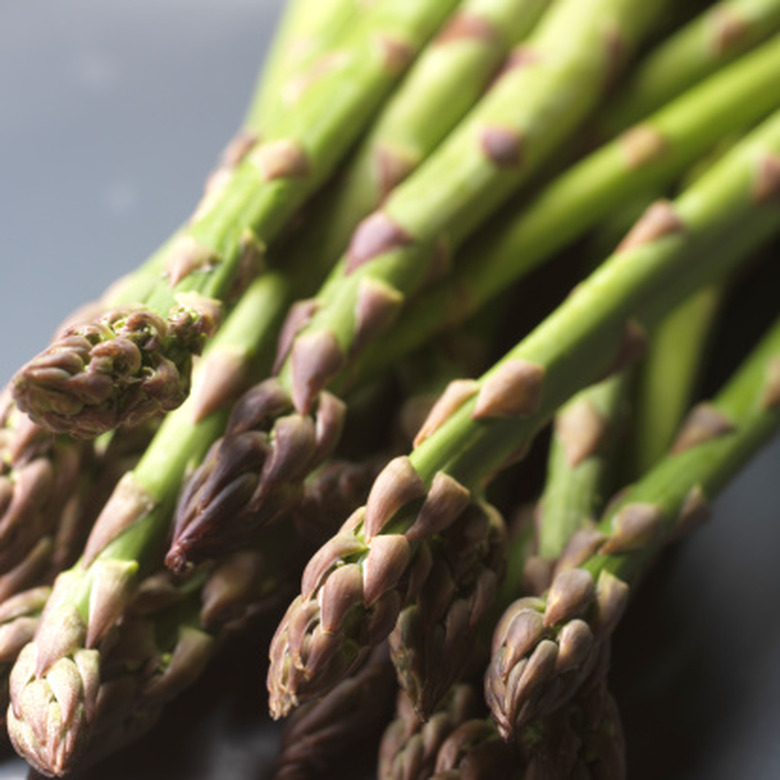Will Frost Damage Asparagus Plants?
The Michigan Asparagus Advisory Board calls asparagus "one of nature's most perfect foods." This healthful vegetable has no cholesterol or fat and is high in vitamins B6, A, C and thiamine. It's a long-lived vegetable but frost may damage young spears.
Growing Asparagus
Asparagus requires a high pH soil of about 7.0. Asparagus crowns are planted 8 to 12 inches apart in a trench that is 6 to 10 inches deep and covered with 3 to 4 inches of soil. Rows are set from four to five feet apart. Organic compost and a small amount of phosphate fertilizer are then added. Plants are allowed to mature without harvesting for the first three years.
- The Michigan Asparagus Advisory Board calls asparagus "one of nature's most perfect foods." Asparagus crowns are planted 8 to 12 inches apart in a trench that is 6 to 10 inches deep and covered with 3 to 4 inches of soil.
Ferns
After harvesting, the spears grow into ferns with red berries; these ferns produce the nutrients for the crown to produce a good crop the next season. The ferns should never be pruned or cut back. They will die back with winter frost but the underground crown will survive cold weather and be recharged for spring production.
Frost Damage to Spears
Frost can kill young asparagus spears when they first emerge from the soil. They will shrivel and turn black, making them inedible. Cut off all damaged spears. An eight-inch layer of organic compost or other mulch will help to keep the soil warmer and protect the crown from very cold weather.
- After harvesting, the spears grow into ferns with red berries; these ferns produce the nutrients for the crown to produce a good crop the next season.
- They will die back with winter frost but the underground crown will survive cold weather and be recharged for spring production.
& How To Cut Down Asparagus Plants
Asparagus is usually planted in the form of bare-root crowns. These are 1-year-old clumps of roots with dormant buds that can be planted directly in the garden. Once asparagus plants reach their third year, you can harvest them fully every year, usually over a period of at least two months. Mature plants will begin sending up shoots in early spring, and continue doing so well into summer, depending on your climate. Continue to harvest asparagus until the new stalks become small and thin. Asparagus is ready to harvest when spears are 6 to 8 inches tall. Cut stalks off at ground level with a pair of clippers or gardening snips. It is also possible to snap stalks off with a gentle, twisting pull.
- Asparagus is usually planted in the form of bare-root crowns.
- Once asparagus plants reach their third year, you can harvest them fully every year, usually over a period of at least two months.
References
- Michigan Asparagus Advisory Board: Asparagus Online
- Food and Agriculture Organization of the United nations: Frost Damage: Physiology And Critical Temperatures
- University of Virginia: Fall Vegetable Gardening
- Sunset: Asparagus
- Harvest to Table: Asparagus Growing and Care Calendar
- Ohio State University Extension: Growing Asparagus In The Home Garden
- Iowa State University Extension and Outreach: Answers to Frequently Asked Asparagus Questions
- NC State University Extension: Home Garden Asparagus Production
